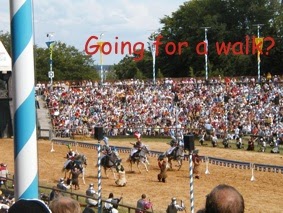Today I want to introduce an initiative I have thought about
for some time: #anitineraryinamonth.
Every month I’ll suggest an itinerary you can follow or to which you can take
inspiration. In March, I am going to guide you in Germany with a short four-day itinerary in Bavaria. Taking as our base the capital
city of this Land, Munich, I suggest
four destinations you can visit in a day each. The best period to visit Bavaria
is definitely summer, in particular
in July.
First day:
Schongau
I have already written about this little town here. It
is around an hour away from Munich. You have two options to reach it: by car,
through A96 and B17, or by train, leaving from Munich Hbf and arriving at
Schongau station, little far from the town centre.
Useful links
 |
| A detail in the town centre |
Surely this destination is more known. The main
attractions here are its castles, in particular Neuschawstein, Ludwig
II's hause. Those who grew up watching Disney’s Sleeping Beauty may find
it familiar. Indeed, this is the model for Prince Philippe’s castle. The
fairy-tale setting is not only that, though. To reach the castle, you need to
go through a long road through the wood
(walking or by carriage), going up slowly towards the target. Every now and
then, stop and admire the panorama beneath and the magic of this place. After
the visit of the castle, go back in Füssen, through the same road of the
going, and enjoy a good ice-cream in the town centre.
Getting there
By car: through A96. Travel time: 1h 37 minutes.
By train: from München Hbf to Füssen. Travel time: 2 hours.
Useful links
Third day:
Lechbruck am See
After an intense day in Füssen,
a day trip to Lechbruck am See is perfect. It is a green area on the shores of Lech. You can enjoy a walk in the
nature, a quiet picnic or can rent a boat and make a tour on the lake in
company with ducks and swans.
Getting there
By car: through A96. Travel time: 1h 22 minutes.
By train: from München
Hbf to Lechbruck am See. Travel time: 2 hours.
Useful links
Fourth day:
Kaltenberg
The last stop-over of this itinerary is this little medieval town known in particular for
two things: bier and knightly tourney. In July, every
weekend they organize a knightly show in the arena of this little place.
Besides, a medieval-style market on the background of the castle dating back
1290 will help you to go back to the time of ladies and knights.
Getting there
By car: through A96. Travel time 48 minutes.
By metro S4, get off at the stop “Geltendorf” and take the bus to the town.
Useful links
What do you thing about this?
I hope that this itinerary will help you in the
organization of your holidays, discovering a less known part of Bavaria.
Besides, I hope that you will like this section too.









Commenti
Posta un commento
Feel free to leave a comment!
I would be glad to know your opinion! ;)
Thank you! :)